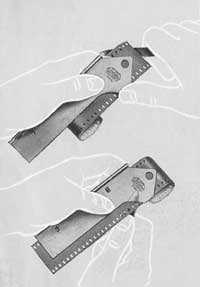Damaso
Photojournalist
I don't know if this has already been posted but there is an interesting article in the Economist http://www.economist.com/science/displaystory.cfm?story_id=12446916&fsrc=rss .
My question is: how many people use a IIIf? Some of what he was complaining about could have been solved with the modern take up spool of a later Leica.
Anyway, it is a funny and lighthearted piece.
My question is: how many people use a IIIf? Some of what he was complaining about could have been solved with the modern take up spool of a later Leica.
Anyway, it is a funny and lighthearted piece.


